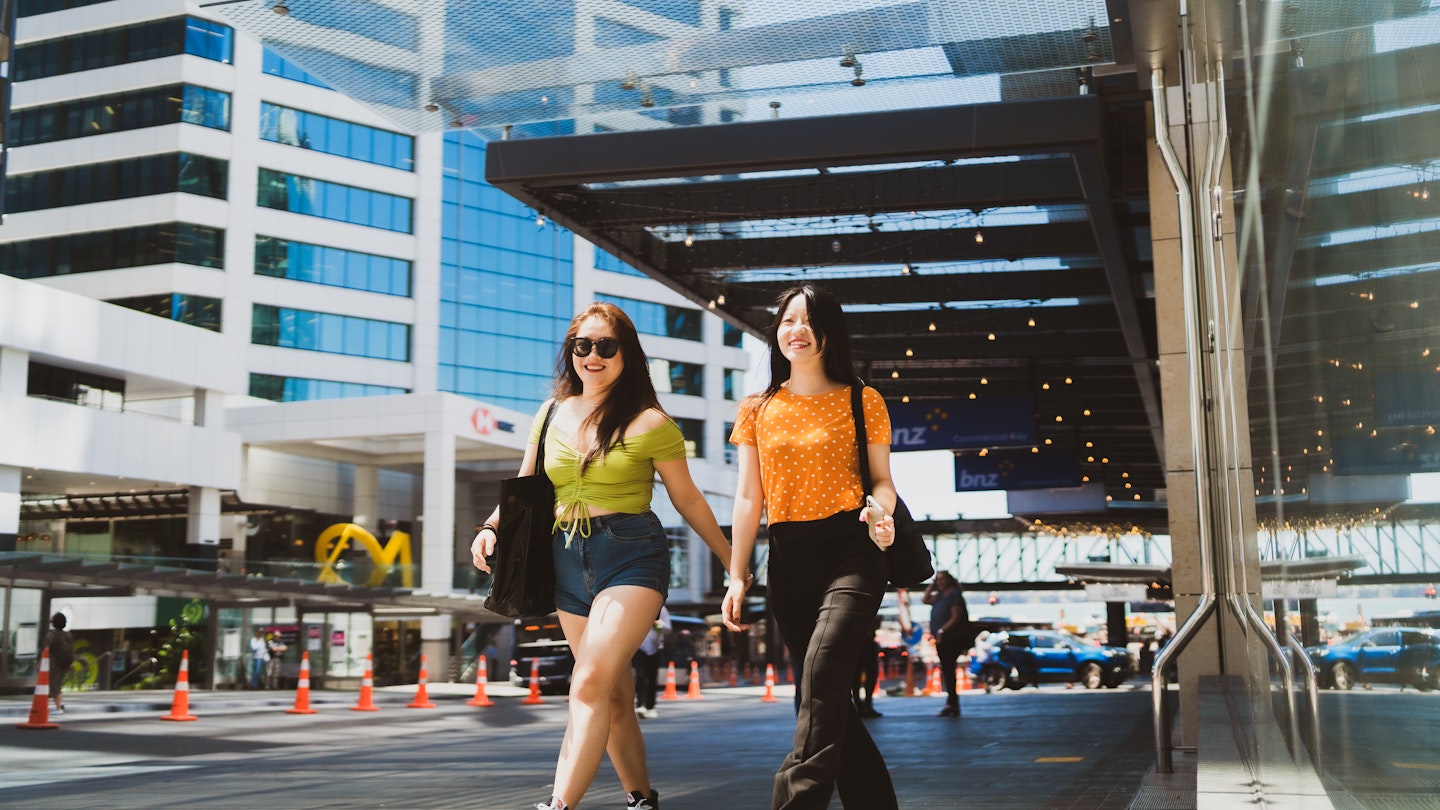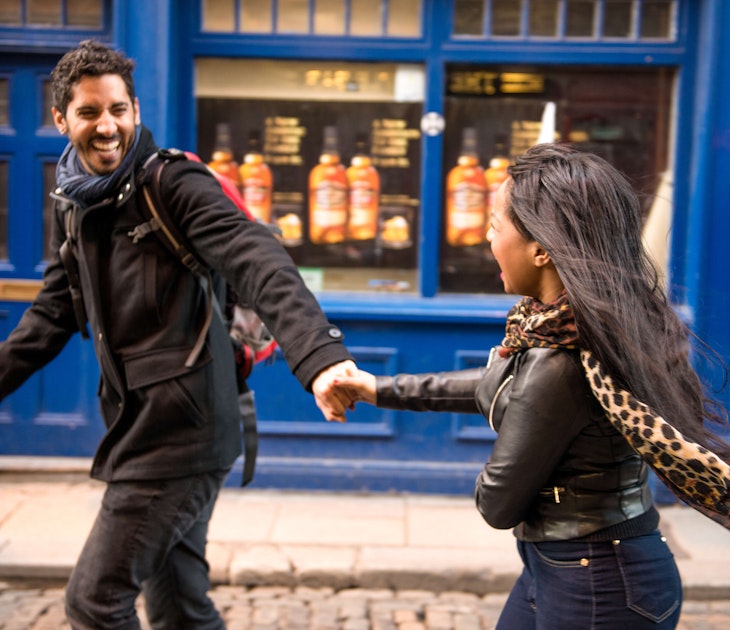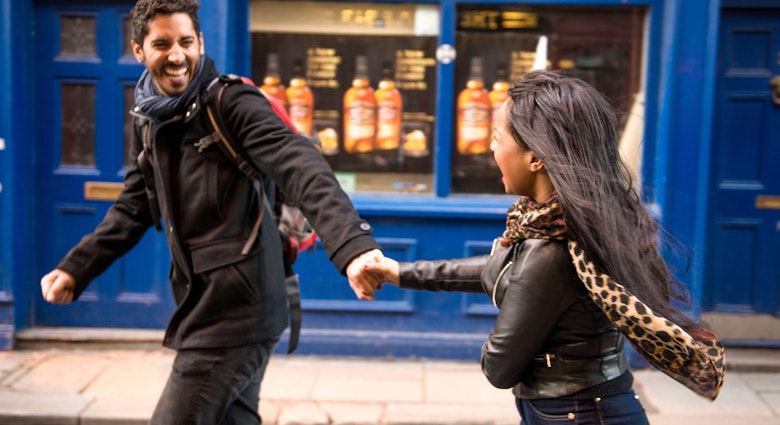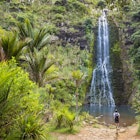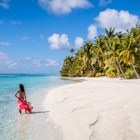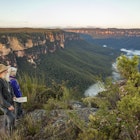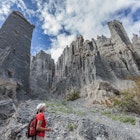While I was born and bred here in New Zealand – or Aotearoa, the country's Māori-language name – I’ve spent enough years away to understand how it’s a destination that can feel comfortingly familiar and completely strange to visitors all at once.
The butter is bright, beta-carotene yellow. Pies are filled with meat. You usually go up to the counter to pay for your meal. Never, ever sit on a table – it’s a taboo that has spread from Māori to the wider population.
But this diverse country of boiling mud pools, soaring mountains, subtropical beaches, rainforests and friendly people will make you feel – well, "sweet-as." (Yes, that means good.) Here are some things to know before going to New Zealand.
1. New Zealand’s weather may be relatively mild – but it also has the potential to be wild
An archipelago in the Pacific, New Zealand is a long, skinny country moored in tempestuous oceans heavily influenced by Antarctica. Its landmass stretches between 34 and 47 degrees south – the rough equivalent of northern Morocco to southern France – and the climate is often compared to Britain’s.
What does this all mean? The weather can turn bad quickly. It pays to pack for all seasons, with a hat and sunscreen being must-haves. New Zealand’s peak UV levels can be 40% higher than those in similar North American latitudes, thanks in part to its clean air. For some, a blistering burn can happen in minutes and will ruin your holiday for a good week or more. In summer, perhaps plan shadier activities, such as museums, for the peak hours of the day.
2. It’s okay to dress down
Casualness rules in New Zealand, even in urban areas. Depending on what region you’re in, even a wedding might see some Kiwis in jeans, their cleanest bush shirt (a tough woolen shirt) and gumboots (rubber boots) or jandals (flip flops). This is unremarkable.
Something particularly disconcerting to travelers is New Zealanders’ penchant for bare feet. When you’re out of the main cities you’ll see tough-soled Kiwis hot-stepping over bubbling tarmac and strolling through the supermarket unshod. Feel free to pack casual clothes.
3. What do you mean, there’s no bus?
Unbelievably, New Zealand’s public transport was arguably far better in the mid-20th century. But with many tram and railways ripped up for the sake of roads, the country has become very car-dependent.
With a population of only 5.2 million living on a landmass the size of Italy, car culture is proving difficult to shake. While cycling and public transport are making strong incursions, outside of Auckland there is nowhere near the density, quality, affordability and regularity of public transport you may be used to at home. Many New Zealand towns do not even have Uber or other rideshare apps.
With that being said, the country is reasonably well set up for visitors. For example, there are regular shuttle services to popular tourist destinations, such as Hobbiton and Waitomo Caves – but it pays to plan your transport well ahead.

4. Biculturalism is at the heart of Aotearoa’s culture
Unlike many colonized nations, in 1840 the British Crown signed a founding treaty, the Treaty of Waitangi with Indigenous Māori, who have lived in New Zealand since at least the 1300s. Although colonization’s effect on Māori continues to spark debate and protest, the result is that modern New Zealand is a strongly bicultural nation. Te ao Māori (the Māori worldview) is an integral part of even everyday interactions. This is evident to visitors, who have countless Indigenous-led tours, eateries and experiences to choose from.
To show respect, ask about local iwi (tribe) customs. As an example, don’t stand on the summit of maunga (mountains) including Ngāuruhoe (Mt Doom in the Lord of the Rings films) or Taranaki, if you go for a hike. As the head of an ancestor, mountain tops are regarded as tapu (sacred). New Zealand’s most famous son, Sir Edmund Hillary, may have said “we knocked the bastard off” when he and Tenzing Norgay climbed Everest in 1953, but modern travelers don’t have to.
Many place names and road signs are also in te reo Māori (the Māori language). When it comes to speaking it, Kiwis will appreciate you trying to pronounce the words as accurately as possible. ("Wh," for example, is generally pronounced "F.") An online pronunciation guide or podcast can help you with some of the more unfamiliar sounds; try Everyday Māori.
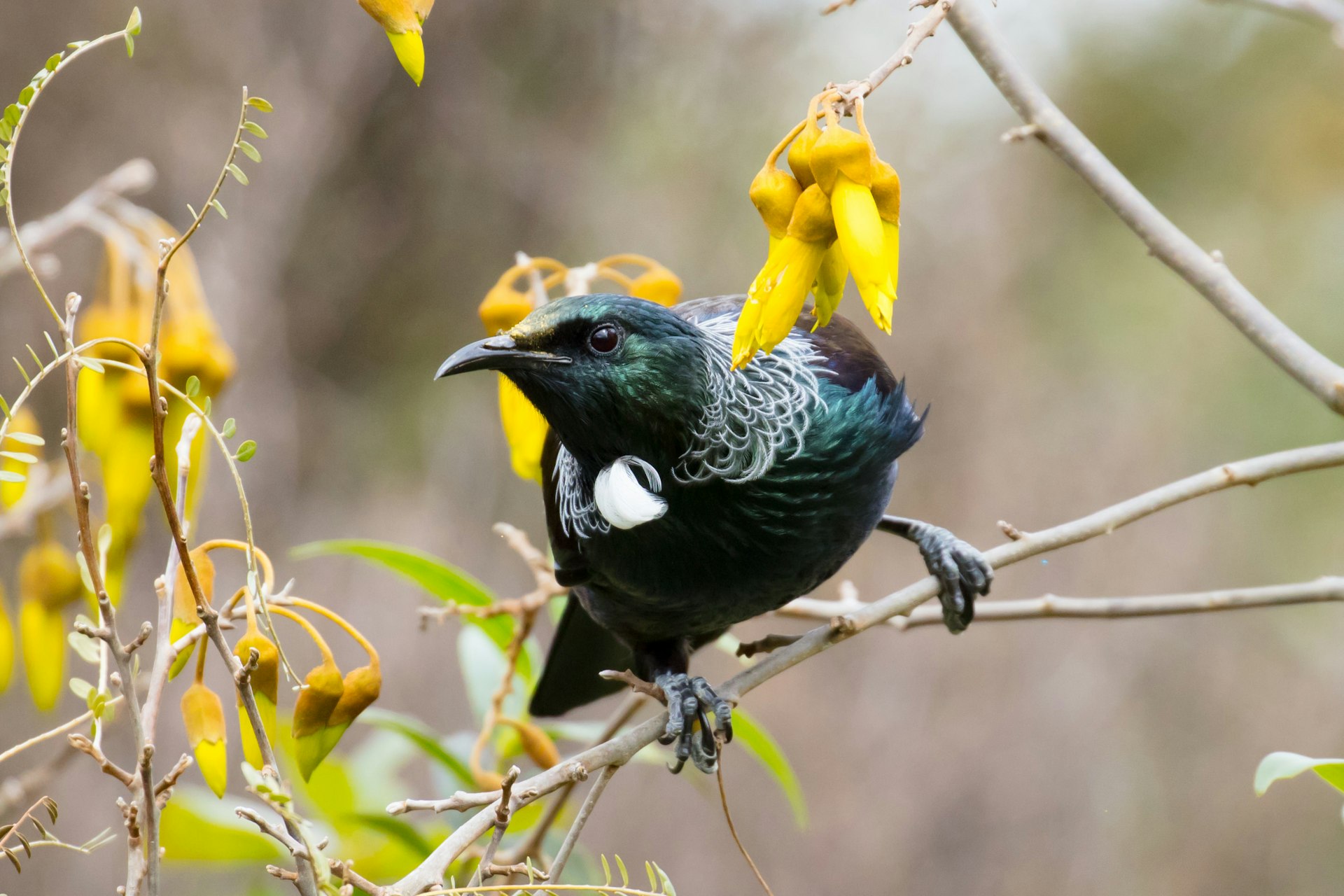
5. If you want to make local friends, ask about our birds
New Zealanders absolutely love talking about their native birds and will immediately consider you a "good sort" (a kind and likable person) if you show interest.
But prepare to settle in. From tūī, kererū (wood pigeons), pīwakawaka (fantails) or whio (blue ducks), everyone has their favorite. Conservation organization Forest and Bird even runs a hotly contested Bird of the Year competition.
We love our birds because we understand how precious they are. Many are endangered, some critically so. New Zealand was a paradise of birds before people arrived around the 1300s, bringing with them rats, pigs, dogs, stoats, mice, cats, rabbits, weasels and possums. These have wreaked havoc and sent biodiversity plummeting; in the last 1,000 years, 40 indigenous species have become extinct. (Thank goodness early settlers did not introduce the mongoose to control the rabbit population, as was suggested in the 19th century.)
The country is currently in the first 10 years of its Predator Free 2050 strategy, which aims to wipe out as many introduced mammals as possible by 2050. It is hugely ambitious and has resulted in a massive groundswell of support as everyday Kiwis exercise their bloodlust, setting rat traps in the backyard.
As a traveler, you'll encounter many tourism operators doing the same. You can learn more about these efforts as you zipline across regenerating forests at Rotorua Canopy Tours or stay at Maruia River Retreat, which is in the process of converting to a fully electric resort powered by renewable sources. Projects are even popping up where tourists can help check traplines, such as Tongariro River Rafting's Blue Duck Experience.
Predator-free bird sanctuaries abound in many areas, including the Zealandia sanctuary in Wellington, a sprawling and peaceful city oasis where you may be lucky enough to see wild kiwi on a guided night tour.
6. ACC is a wonder – but not a replacement for travel insurance
One of the most humane things about New Zealand is its no-fault accident compensation scheme, ACC. Fall and break your leg skiing? Get a bit banged-up on a big night out? It doesn’t matter whose fault it is and that you’re a tourist; if it’s an accident, your medical care is free.
Of course, you’ll need to have your own travel insurance. There are a lot of things – such as travel delays or extra accommodation needs – that ACC won’t cover if you get injured.
7. New Zealand is generally safe, but…
New Zealand is a safe and welcoming country, but crime happens. For travelers, avoiding downtown clubbing areas after midnight is a good way to avoid most problems. Tourist vans can be a goldmine for thieves, and targeted especially when parked at freedom camping sites.
Many travelers have had an unfortunate souvenir of their time in New Zealand: a local newspaper article about how they lost everything in a break-in, ruining their dream Kiwi holiday. If you need urgent help, the emergency number is 111.

8. Pies are savory, not sweet
Kiwis love international cuisine, and you should be able to find something vaguely familiar to eat, especially in the main centers. But try a few quintessentially New Zealand treats, too. Other than the fun you’ll have browsing the supermarket and trying every block of Whittaker’s chocolate on the market, roadside eateries (called "tearooms") and cafes offer a range of snacks.
One of the most filling and affordable small meals is a savory pie, sold just about everywhere. They’re golden, crispy pastry cases with fillings like butter chicken, mince (beef) and cheese, and steak and mushroom. Hint: The best pies are made in the local bakery. To get a winner, choose pies sold in plain white paper bags (not branded plastic) and bite into it straight from the bag.
If you’re down south and spot cheese rolls on the menu, try them, too. Known as "Southland sushi," a magical alchemy occurs when white bread is spread with a mix of grated cheese, evaporated milk, onion and other flavorings, like mustard or garlic, then rolled, brushed with butter and toasted into an oozy, golden delight.
"Slices" are also popular and similar to what Americans call "bars." A cross between a tart and a cookie with a topping or two, they’re baked or refrigerated in a square tin and cut into squares or rectangles. Popular slices are peppermint, caramel (millionaire bar), tan square (caramel shortcake) and the unbeatable ginger crunch.
Lolly cake is another favorite: a coconut-malt, no-bake cookie studded with colorful marshmallow-like fruit puffs.
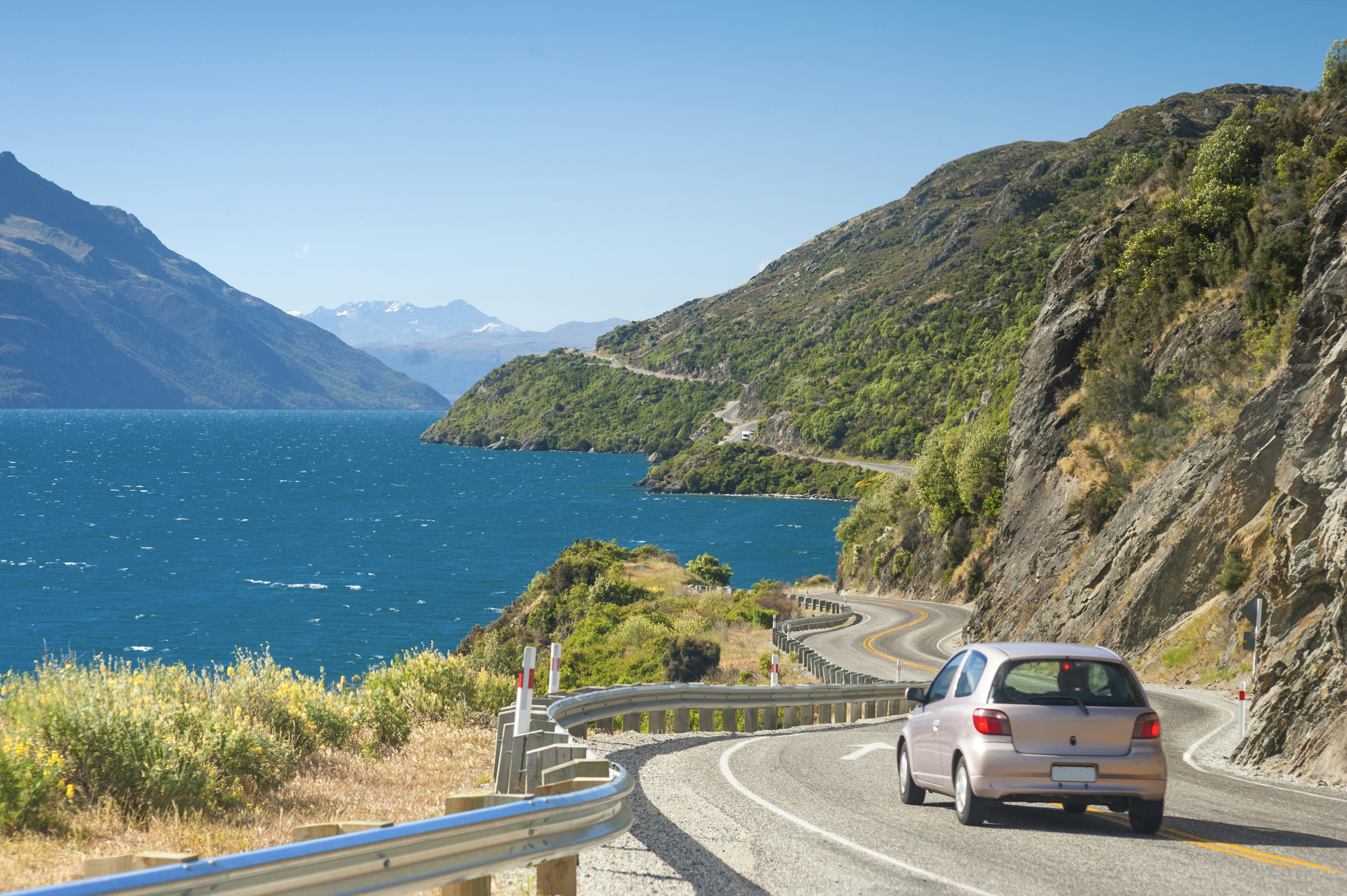
9. Driving is very different in New Zealand
Unlike the wide, multi-lane expressways of other countries, many of our major roads are only dual carriageway or a two-way divided highway. They’re often winding and hilly, with the added obstacles of construction and "slips" (a Kiwi word for landslides).
Before you head off, check NZTA for potential road closures. Take care not to plan an overly ambitious road-trip itinerary, such as driving from Auckland to Cape Reinga in a day with stops for activities along the way. That might look like five-and-a-half hours on Google Maps, but it’ll probably be slow and exhausting. There’s no such thing as setting the cruise control and chilling out, letting drivers pass on the lanes around you.
You'll need your wits about you, particularly if it is your first experience driving on the left. When everyone’s driving in single file, people get frustrated. Kiwi drivers can follow too close for comfort, pass aggressively and have a particular disdain for camper vans.
If you’re feeling nervous and notice a long line of cars behind you, you’ll be more relaxed if you regularly pull over where it’s safe and let the line of impatient locals pass. At least they’ll give a friendly toot of thanks.

